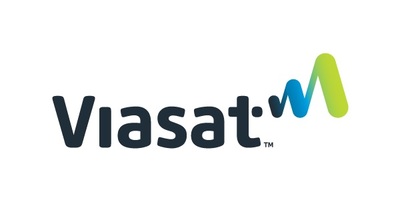CARLSBAD, Calif., Sept. 8, 2014 /PRNewswire/ -- ViaSat Inc. (Nasdaq:VSAT) has reached a comprehensive settlement of all outstanding claims related to its litigation with Space Systems/Loral (SS/L) and Loral Space & Communications Inc. for breach of contract and patent infringement.

In April 2014 a U.S. District Court in San Diego determined that SS/L breached its non-disclosure agreement with ViaSat by disclosing proprietary data to SS/L customer, and ViaSat competitor, Hughes Network Systems that was used to design Hughes' Jupiter-1 (now EchoStar XVII) high-capacity satellite. The jury also found three ViaSat patents to be both valid and infringed by SS/L's design of the Hughes Jupiter-1 satellite. A second lawsuit covering additional ViaSat patents and alleging infringement by additional SS/L satellites, including Jupiter-2 (EchoStar XIX), was likely to go to
trial in early 2016. Under the terms of this agreement, ViaSat will settle its claims in both suits in exchange for $100 million plus interest to be paid to ViaSat through 2016.
"We have worked hard and invested much to prove that ViaSat created and owns the critical enabling technology of the first generation of high-capacity satellites built by SS/L, including ViaSat-1, Jupiter-1, and others still being manufactured and identified in the referenced suits," said Rick Baldridge, president and COO of ViaSat. "We believe this settlement is the largest ever in a commercial satellite communications intellectual property matter. It is a prudent solution that ends the distraction and cost of protracted litigation. The settlement also establishes an attractive economic value for our enabling technology that is in use among current and planned satellites, while
allowing us to focus our full efforts on our next generation high-capacity satellite technologies."
The next generation (ViaSat-2) satellite design and payload technologies are being manufactured by Boeing with the first launch scheduled for mid-2016.
"We expect our ViaSat-2 generation of satellite systems to demonstrate dramatic improvements in several dimensions when compared to our first generation," continued Mr. Baldridge. "Compared to prior generation satellite systems, we believe this new generation of high-capacity systems will have as much impact on satellite broadband as ViaSat-1 did upon its launch, and we are not stopping there. We are committed to continuing to advance the state of the art for satellite broadband technologies in consumer, mobile, and enterprise markets."
ViaSat was represented by Quinn Emanuel Urquhart & Sullivan, LLP in the lawsuit.
About ViaSat (www.viasat.com)
ViaSat creates satellite and other wireless networking systems that efficiently deliver the most bandwidth for fast, secure, and high-performance communications to any location for consumers, governments, enterprises, and the military. The company offers Exede® services in North America, which feature ViaSat-1, the world's highest capacity satellite; worldwide mobile satellite services, including global tracking and messaging as well as high-speed in-flight internet; satellite broadband networking systems; and network-centric military communication systems and cybersecurity for the U.S. and allied governments. ViaSat also offers communication system design
and a number of complementary products and technologies. Based in Carlsbad, California, ViaSat employs over 3,300 people in a number of locations worldwide for technology development, customer service, and network operations.
Safe Harbor Statement
This press release contains forward-looking statements that are subject to the safe harbors created under the Securities Act of 1933 and the Securities Exchange Act of 1934. Forward-looking statements include, among others, statements that refer to the timing of receipt of any award, the launch date for ViaSat-2, and the anticipated improvements and impact of ViaSat-2 and future generation systems on satellite broadband markets. Readers are cautioned that actual results could differ materially from those expressed in any forward-looking statements. Factors that could cause actual results to differ include: our ability to realize the anticipated benefits of the ViaSat-2 satellite; unexpected expenses related to the satellite
project; our ability to successfully implement our business plan for our broadband satellite services on our anticipated timeline or at all, including with respect to the ViaSat-2 satellite system; risks associated with the construction, launch and operation of ViaSat-2 and our other satellites, including the effect of any anomaly, operational failure or degradation in satellite performance; negative audits by the U.S. government; continued turmoil in the global business environment and economic conditions; delays in approving U.S. government budgets and cuts in government defense expenditures; our reliance on U.S. government contracts, and on a small number of contracts which account for a significant percentage of our revenues; our ability to successfully develop, introduce and
sell new technologies, products and services; reduced demand for products and services as a result of continued constraints on capital spending by customers; changes in relationships with, or the financial condition of, key customers or suppliers; our reliance on a limited number of third parties to manufacture and supply our products; increased competition and other factors affecting the communications and defense industries generally; the effect of adverse regulatory changes on our ability to sell products and services; our level of indebtedness and ability to comply with applicable debt covenants; our involvement in litigation, including intellectual property claims and litigation to protect our proprietary technology; and our dependence on a limited number of key employees. In addition, please refer to the risk factors contained in our SEC filings available at www.sec.gov, including our most recent Annual Report on Form 10-K and Quarterly Reports on Form 10-Q. Readers are cautioned not to place undue reliance on any forward-looking statements, which speak only as of the date on which they are made. We undertake no obligation to update or revise any forward-looking statements for any reason.
Exede is a registered trademark of ViaSat Inc.
Logo - http://photos.prnewswire.com/prnh/20091216/VIASATLOGO
SOURCE ViaSat Inc.

